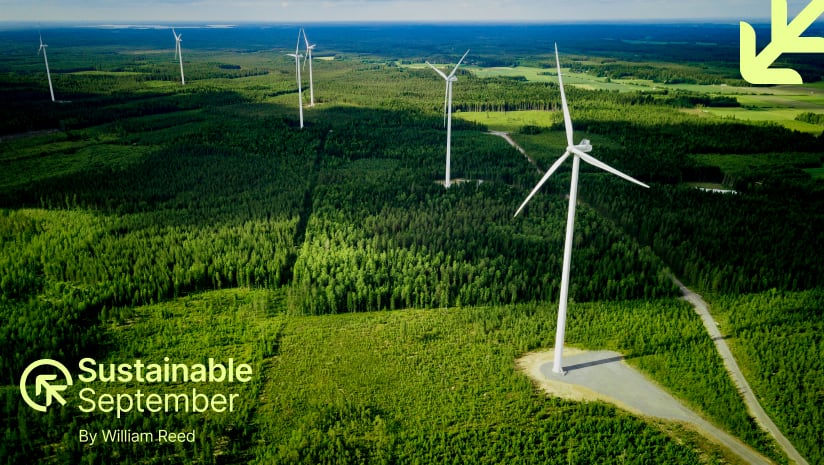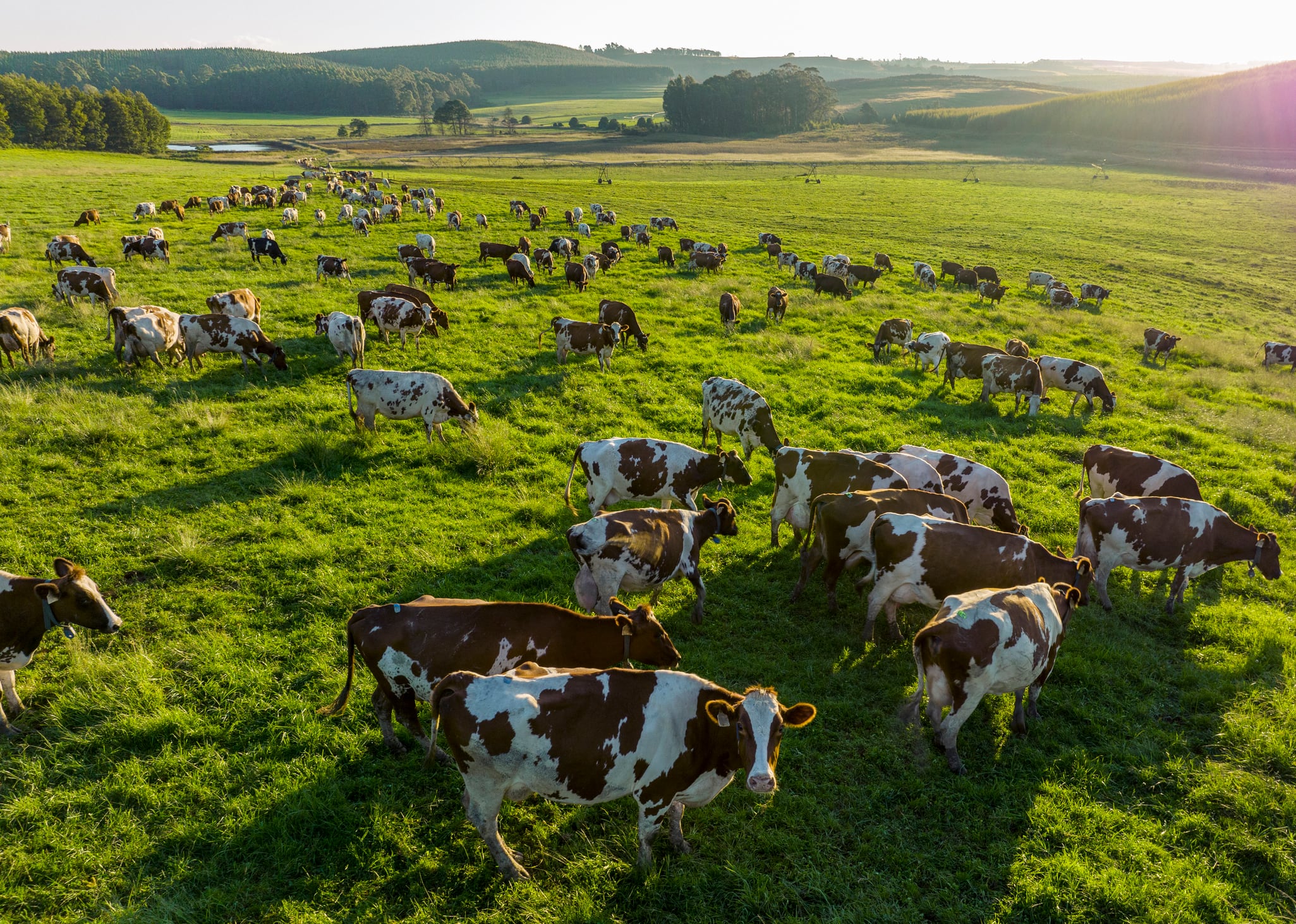At a time when margins are squeezed, trade faces uncertainty and environmental regulation is under pressure, why should your company continue to invest in sustainability?
Sustainability doesn’t come cheaply or quickly. It takes concerted effort to move the needle, and even then, progress isn’t always linear, particularly at farm level. Reporting isn’t harmonized, leaving gaps in accountability and transparency – and often, putting businesses from the same sector but different operating regions at a competitive disadvantage due to stricter or leaner reporting requirements.
In food, indirect (scope 3) value chain emissions form the biggest part of companies’ GHG emissions footprint; with agriculture accounting for the majority of that.
Within agriculture, livestock production is the biggest source of GHG emissions, and methane (see box-out) is the single biggest source of emissions from livestock (with CO2 and N2O also emitted).
Up in the air
Methane (CH4) is the single biggest source of emissions in agriculture. While it has a shorter lifespan in the atmosphere than carbon dioxide (CO2), it’s a far more potent gas that has driven around 30% of global warming to date, according to the International Energy Agency (IEA).
And the concentrations of methane in the atmosphere have continued to rise in recent years, with around 580Mt of CH4 emitted globally per year. Emissions from human activity, such as oil and gas production and agriculture, are the leading source of methane at around 60% of the total; followed by 40% from natural sources, such as wetlands.
In short, eliminating methane from human activities would yield palpable results in the near-term, helping to keep global warming in check.
Globally, livestock production is estimated at about 12% to 17% of global GHG emissions, with FAO’s latest data from 2022 putting it at 12%. Does this mean emissions from cattle are falling? It doesn’t – according to multiple studies, any of these estimates are likely underestimated due to uncertainty in the underlying data and contradicting evidence in the amount of methane observed in the atmosphere.
Climate risks are very real and wide-reaching. Research shows that climate change will impact the livestock sector from farm to fork. Feed, water and grazing land are all at risk from extreme weather events, and so is infrastructure and cold chain resilience. Heat stress affects not just animals but people too – with the WHO recently issuing a new guidance to protect agriculture workers.
All this has a direct impact on profits: according to a 2023 Coller FAIRR Climate Risk Tool report, dairy producers would see moderate reductions in EBIT margins by 2030 and 2050, and policy mechanisms like carbon pricing could raise costs by 15%-20% by 2050 versus 2020.
If you are not a producer but source animal products or ingredients, emissions from those production systems impact your company’s scope 3 emissions. Diversifying your mix by switching to dairy- and meat-free alternatives or ingredients is one way to reduce your climate impact, but it’s not a magic bullet.
Plant-based alternatives remain a much smaller market compared to meat and dairy, if one that’s now firm part of the food landscape; hybrid dairy is testing the waters in some markets; and animal-free ingredients such as precision fermentation-derived proteins offer promise but face regulatory hurdles and consumer acceptance challenges.
Climate campaigners want livestock production and consumption to be reduced to stop climate change. But livestock farming isn’t going away.
Demand for dairy is growing – based on the latest OECD estimates, world per capita consumption of fresh dairy products is anticipated to grow by 1% per annum over the coming decade, driven by growth in disposable income. Global milk production is also set to grow, at 1.8% per year over the next decade, driven by higher yields per cow and moderate increases in herd size.
There’s growing evidence that eco certification is a smart investment for natural food brands – and investor trust in value-relevant financial statements is strong.
Of course, there are greater priorities than sustainability for today’s executives – according to McKinsey research, factors like cost, volume growth and supply chain resilience are all of greater importance, but there’s no denying that sustainability is now among the core priorities.
Getting private funding or government assistance is where the game is at. But how are regulators in Europe and the US responding - and what’s the state of green financing?
Regulation and green finance
The EU has increasingly recognized the livestock industry’s role for food security and the bloc’s rural economy, particularly in the face of growing farmer unrest in 2024. The exemption for large-scale livestock farms from the updated Industrial Emissions Directive, and the introduction of eco-schemes as part of the common agricultural policy, known as CAP, have been among the key wins for the industry.
The eco schemes in particular are designed to support practices such as organic farming, agro-ecological practices, precision farming, agro-forestry or carbon farming, as well as animal welfare improvements. All member states have allocated funding that producers can apply for.
At the same time, Ireland’s pasture-grazed beef and dairy sector is facing a reckoning as the industry scrambles to avoid the lowering of its nitrates derogation by the EU at the end of 2025; highlighting the vulnerabilities pasture-based systems face and the need for GHG emissions mitigation efforts to press on.
As for corporate ESG reporting, the EU recently voted to delay the implementation of its Corporate Social Responsibility Directive (CSRD) and also reduced the scope of reporting for around 40,000 companies, including many US-based firms. This delay is largely linked to the complexity of scope 3 reporting.
The CSRD wants business to capture emissions across the value chains of companies across the 27 member states: a tall order, making the delay welcome for firms. The implementation has been pushed back by two years, however, making now a good time for businesses to start assessing their scope 3 impact.
Over in the US, the Biden administration tripled investment in climate projects for farming and forestry, but president Trump canceled a significant part of those programs after his administration found that most projects provided too little money to farmers and generated too much to administrative costs. Biden’s climate smart program has been repackaged into a new format with several ‘farmer-first’ prerequisites: notably, that at least 65% of total grant funds must go directly to producers. This refocuses efforts on supporting producers directly.
The USDA also supports livestock farmers through the Environmental Quality Incentives Program and the Renewable Energy for America Program; and the US government has also set out to inject $60bn in agricultural subsidy programs as part of a sweeping tax bill – though the bulk of the funding will go towards large-scale crop farmers, according to analysis.
As for ESG reporting, the SEC decided to back out of its defense of climate change disclosure rules mandate for public companies, in a shift to its approach to climate-related disclosures. Those companies may still be bound to international climate-related disclosure requirements or their own disclosure rules. More generally, ESG reporting in the US combines voluntary guidelines with mandatory regulations, with state-level regulations increasingly shaping the reporting landscape.
For public and private finance bodies, there’s scope to drive sustainable action by increasing green financing options for agriculture.
FAO analysis from 2024 showed that in 2022, $29bn, or 23% of climate-related development finance was allocated to agrifood systems - an improvement from 2020/21 levels but still insufficient for agrifood systems transformation. Livestock received a modest share of climate-related finance compared to agriculture, environment, and food security.
Funding to livestock increased from 2021, but remains relatively low, indicating a need for more targeted investment. There’s need for grants, insurance schemes and blended finance models, FAO suggests, as debt instruments such as concessional loans may put smallholder farmers, particularly in Asia and Latin America, at risk.
World Bank, Germany, Japan, and CAF were among the top contributors to adaptation in agrifood systems, with multilateral development banks also increasing their contributions, the report shows. All this indicates growing institutional support for climate resilience in agriculture and livestock.
Why methane mitigation matters
There are multiple levers companies can pull to affect change – but in the end, it would be impossible for the global livestock sector, and the food industry as a whole, to make meaningful progress without measuring, monitoring, reporting and reducing emissions, particularly methane.
Food majors like Danone and Nestlé are leading the way in methane disclosures, but there’s still a long way to go.
Methane mitigation solutions, such as feed additives and gas-conversion technologies, are underexplored and will continue to be of interest to food firms due to their scope to tackle methane at source. Communicating how these tools are leveraged and their benefits for the environment will be equally crucial to foster consumer acceptance – otherwise, even some of the best-researched and tested solutions on the market can spark consumer anxiety, with reputational risk for firms in tow.
Data transparency and effective mitigation, as well as collectively working towards harmonized disclosure standards would be crucial steps to addressing long-term GHG emission goals. And in the near term, companies have less than five years to hit their 2030 targets. Would anyone make it?
Sustainable September

This month, DairyReporter will publish a series of articles under the Sustainable September banner – a William Reed initiative – giving prominence to sustainability in our biggest commitment to covering this important topic for the dairy industry.
If you haven’t already, subscribe to our newsletter and follow us on LinkedIn to get the latest analysis and news on sustainability and beyond. We appreciate your support.
Also tune into Climate Smart Food – William Reed’s first carbon neutral broadcast series, which will also shed light on important topics for CPG companies and include expert speakers from the likes of Heineken and ING Bank.
Finally, check out sisters sites:
for their own coverage on sustainability.
We want to hear what you think! Take our short, anonymous sustainability survey - and we'll make a donation to Farm Africa
Is the food and drink industry doing enough when it comes to sustainability? Where are the causes for celebration - and what are the challenges and concerns?
We want to know what you think! This short, anonymous poll will take just a couple of minutes to complete: yet your thoughts will help us take a global pulse check of what matters most as we look to shape a more sustainable future for the F&B industry.
And for every survey completed, we'll make a donation to Farm Africa: a charity that reduces poverty in eastern Africa by helping farmers grow more, sell more and protect the environment for years to come (up to a maximum amount).

